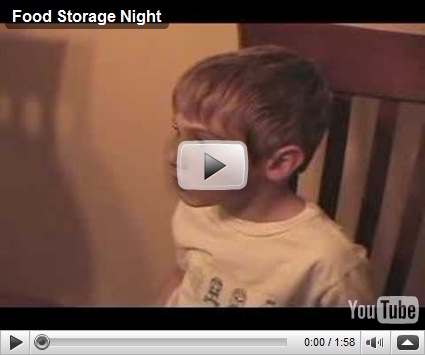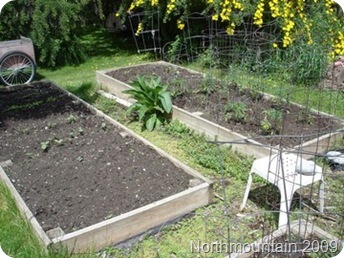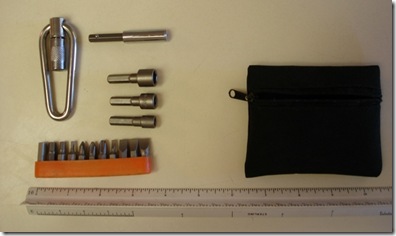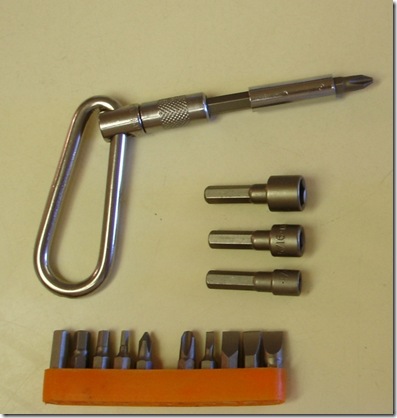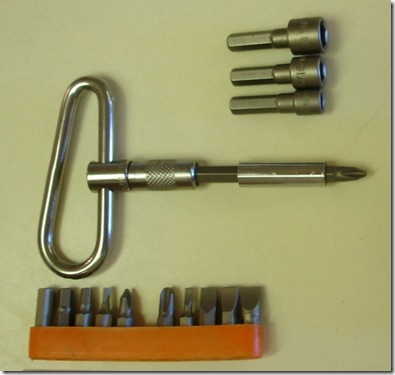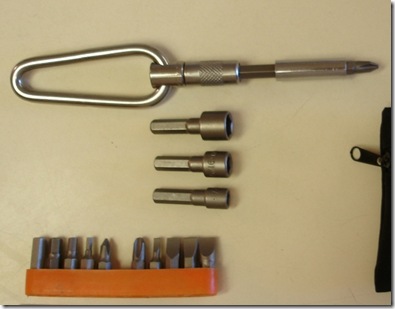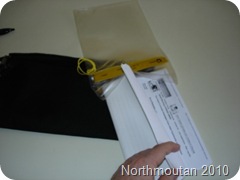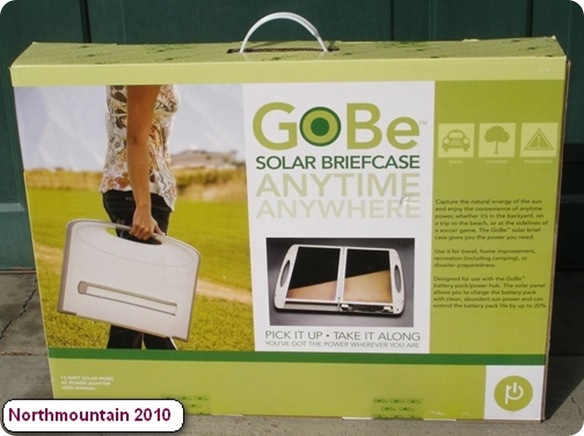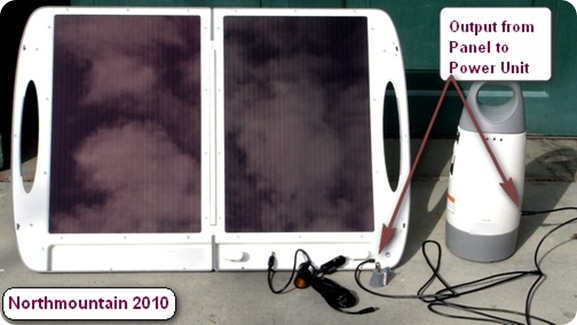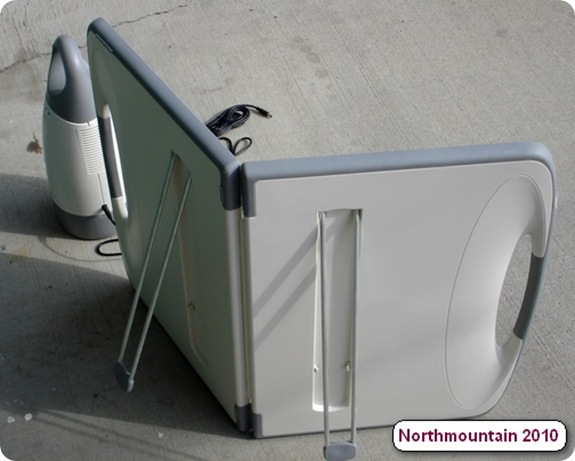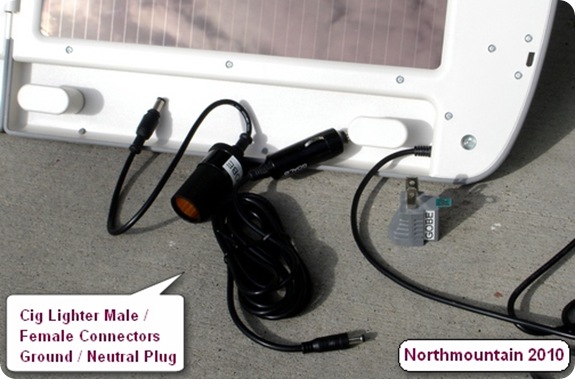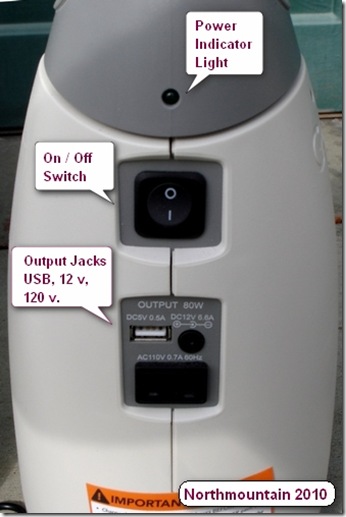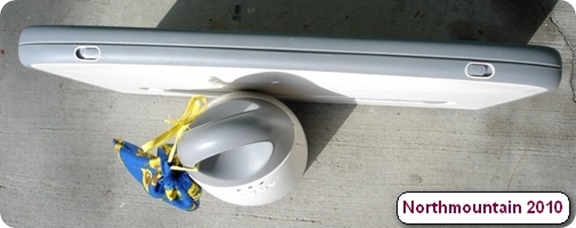A 72-hour kit it the popular description of an emergency kit. In real disaster situations, 72-hours frequently pass and emergency responders haven't reached a large percentage of the victims.
Most adults can skip eating for a day and not be affected in normal life. In a disaster / stress situation, not eating for a day may severely compromise our ability to physically respond to the immediate needs of our families. We need to consider increasing the water and food stored in our kits for a few extra days. Even if help comes within 72-hours, other people may not be as well prepared and will need our surplus.
Most of the list below has been around for years. I've tweaked it to include items included in the 96-hour kits of folks we've met who use their kits with their families in emergency training activities at least twice a year.
It is just a list. It is not intended to be all inclusive or serve as a strict rule of thumb. Scan through the items in the list and compare their function to the contents in your own emergency kits.
All of us need to use our emergency kits several times a year for a number of reasons:
- Rotation of the food. You may not like MRE's, weevil ridden energy bars or 'sawdust' food bricks!
- Rotation of the water Becoming comfortable and proficient in the use of the food and tools in the kit
- Replace clothing if needed due to growth, utility, durability, warmth, convertibility, etc.
- Gaining confidence in being able to actually survive with the kit
- Tweaking kit contents to fit reality
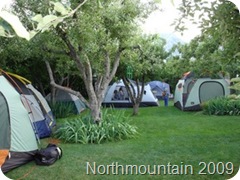
Our children and grandchildren camp out with us in our orchard for three days every summer. We all live out of our emergency kits. Not only are they fun family gatherings, but they are great learning experiences for our grandchildren. They are very comfortable living out of their bags for these gatherings. Fortunately, bathrooms, showers and baby stations are still available for all of us during these fun mini-vacations.
Every spring and fall, the individual families travel to locations that they enjoy and again live out of their kits while they bicycle through the slick rock or camp on the shore of a favorite lake. Thus their kits are old friends, constantly being used and renewed.
Consider implementing the regular use of your emergency kits in your family. During your adventure consider: Is 72-hour preparedness enough? .... and be thankful for working bathrooms.
96-Hour Kit List
Personal Emergency Plan
Contact List / Phone Numbers
Water
Gallon / person / day = 8.35 lb / gal
Poly canteens, 1 quart
Sierra cup
Water purification tablets
Water purifier & extra filters
Water bag, nylon
Water bag liners, plastic
Solar still
Rubber surgical tubing Bedding
Foam pad, closed cell
Sleeping bag - temp rating your area.
Air pillow
Food
Personal daily rations
Energy bars, tablets
Trail snacks
Freeze dried packs (Mtn. House, etc.)
MRE's
Your Own Food List
Cleanup
Scouring pads, soap filled
Sanitary tablets & dunking bag
Dish towel - black dries fastest in sun
Clothing
Hiking boots - broken in
Trail sneakers
Socks
Underclothing
Thermal underwear
Shirts, short sleeve
Shirts, long sleeve
Shorts, hiking
Sturdy trousers, long
Sweat pants - can cut off if hot
Belt and buckle
Sweater
Down vest
Down jacket
Parka
Poncho
Gloves, leather and snowboarder
Mittens, wool
Scarf
Balaclava
Bandanna, large
Hat - brimmed -
Swimsuit
Cooking Equipment
Frying pan, folding
Cook set, nesting
Can opener, P-38
Eating utensil set
Book matches, water proof
Pack stove
Windscreen
Fuel bottles - w / fuel
Condiments
Salt & Pepper
Sugar
Flour
Honey
Milk, dry, instant
Aluminum foil
Shelter
Tent - test assemble it before buying
Tent fly Tent poles Tent pegs
Ground cloth Ultra light weight tarp
Tarp clamps Paracord (550), 50 ft. 2 ea
Personal Hygiene & Sanitation
Toilet trowel or small shovel
Toilet tissue, biodegradable
Feminine hygiene items
Shampoo
Comb and brush
Eye drops
Tooth brush & tooth paste
Shaving gear
Deodorant
Soap & soap dish
Bath towel - black - dries faster in sun
Plastic bags dbl wall - w/ties for waste
Mirror - small - non-breakable
Moist towelettes
Sewing kit
Paper towels
First Aid
Personal First Aid Kit
Family First Aid Kit
Build own kit(s) to fit your family
Prescription medicines you need
Thyroid blocker - potassium iodide
Preventative Aids
Foot powder
Body powder, medicated
Moleskins
Chigger powder
Mosquito repellent
Lip balm
Sun block
Body powder, medicated
Corn starch
Hand lotion
Emergency Gear
Signal flares, night
Signal smoke, day
Signal die, water
Signal mirror
Strobe light
Whistle
Space blankets or bags
Hand warmers
Headlamp
- LED "AA" batteries
CERT kit if trained
Whistle
Dust masks - N95 valved
Vinyl gloves
Personal Items
Camera, lenses, flash and film
Binoculars
Swiss Pocket knife
Sharpening stones and oil
Wallet - Cash $100 - $200 in small bills
Extra house and car keys
Copy of important papers, ie. titles, bank statement, drivers license, etc.
Put docs in waterproof bag - hide in kit
Change $10 / $20 - quarters for phone
Handkerchief
Watch
Sun & prescription glasses
Pencil and note pad
Scriptures Photos - Self - Family - names on back
Photo I.D., Copy of HAM license
Light, Heat, Fire Making
Pack lantern
Spare lantern mantles
Flash light w / L.E.D. light
Spare bulb, batteries
Candle lantern
Spare plumbers candles
Glow sticks
Match safe & matches
Magnesium block
Magnifying glass
Lighter
Spare flints
Fire starting kit
Fishing Equipment
Pack rod case
Pack rod, spin -fly combination
Ultra lite spinning reel
Ultra lite fly reel
15 lb test Spiderwire monofilament
7DTF fly line
Fly line leaders, various lb test
Tackle boxes, small double sided (2)
Hooks, size 8, 10, 12 Fly assortment
Sinkers, split shot
Spinners
Spoons
Small plugs, poppers, bugs
Fanny pack.
Copper wire – spool
Navigation
Map case
Maps
Map measure
Pedometer
Compass
Altimeter
Global positioning system (GPS)
Pack - Pack Frame
Pack or rolling duffle bag
Frame
Clevis pins
Stuff bags
Compression straps
Plastic garbage bags
Twist ties
Communication
Pocket radio, battery/solar power
Cell phone ... and / or
Two way radio: HAM, CB, GMRS, FRS
Spare batteries - know your equip.
Solar battery charger
Clothing Maintenance and Repair
Sewing Kit Spare shoelaces
Biodegradable detergent
Woolite Small scrub brush
Clothes pins
Tools and Repair Kits
Leatherman.or Gerber tool
Doc Allen Versatool
Sven saw
Hatchet/Boys axe w/sheath
8-inch mill file
Spare parts: pack, stove, lantern
Tent/ Pack patch kit: ripstop tape
Small shovel
Needle nose pliers - small wrench
Duct tape
Protection
Pistol - Concealed carry & training
Extra ammo
Knife - Emerson CQC-7
Leather belt - bidirectional dbl layered
Personal protection training
NLP - neuro-linguistic programming
Modify kit list to fit your needs. Use your kit 2 or 3 times a year. If you can't use the contents instinctually before an emergency, you'll be in serious trouble when one hits.
Test all equipment in mock disaster scenarios in backyard or camping activities. Run tests on the coldest day / night of year and then tweak your kits to match your needs.
Remember, you'll be carrying the kit so pay attention to weight. You may have to put some of your kits including water in wheeled bags. Even little folks can maneuver rolling luggage.
![]() Neighborhood Command Centers on to Area Command Centers and finally to the City EOC.
Neighborhood Command Centers on to Area Command Centers and finally to the City EOC.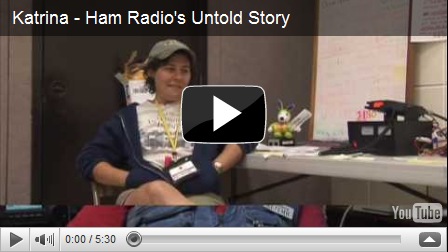


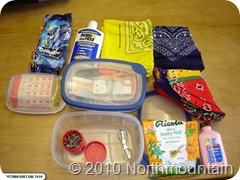
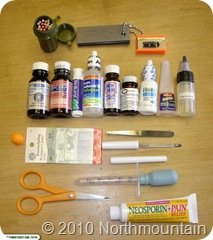


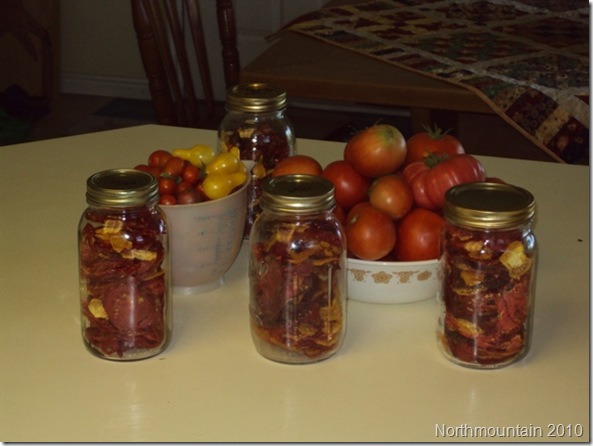


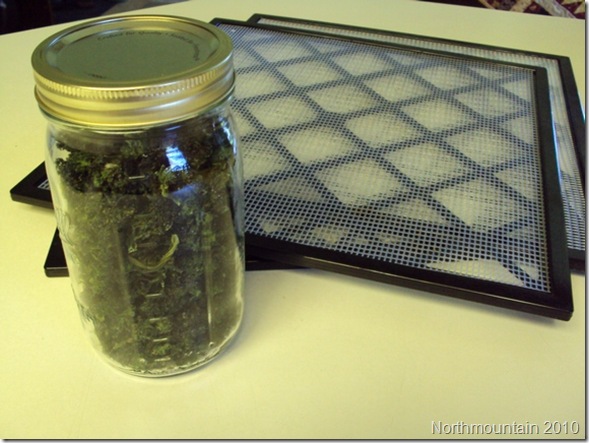
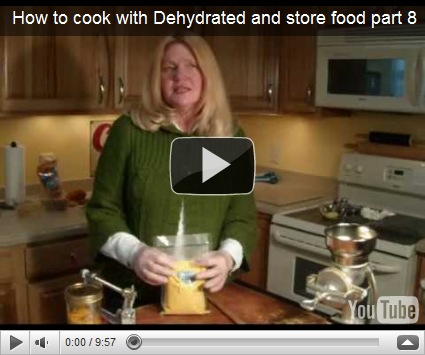
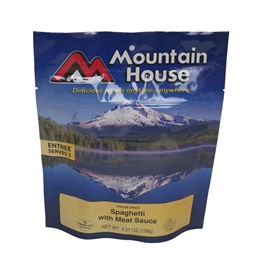



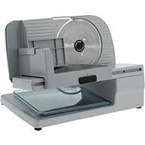
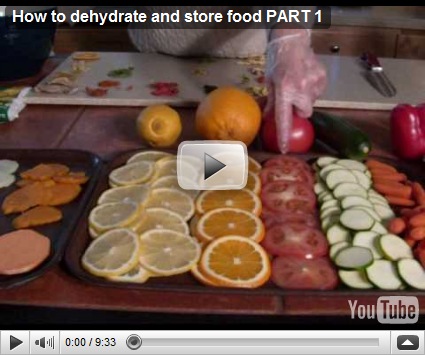

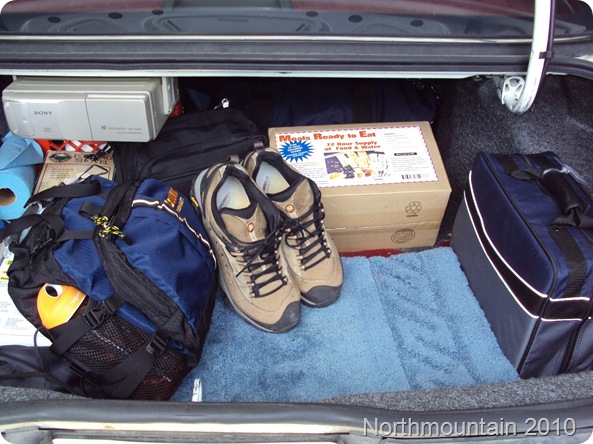






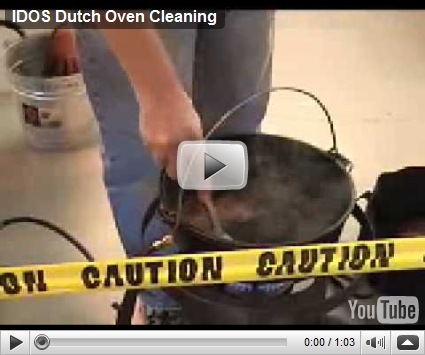
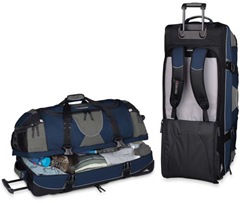
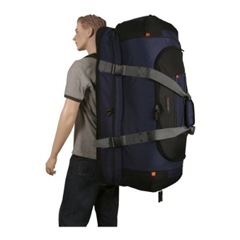
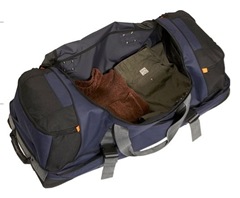
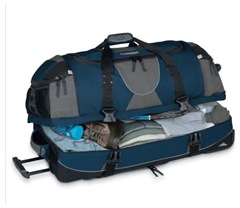
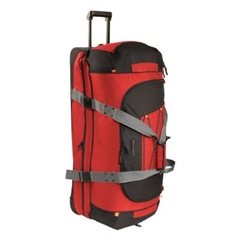
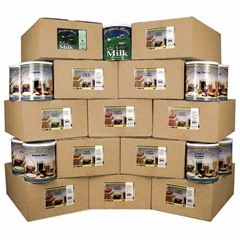
 ..
..